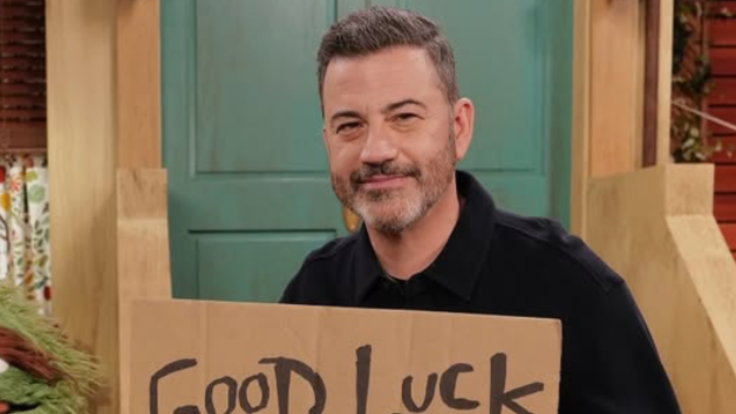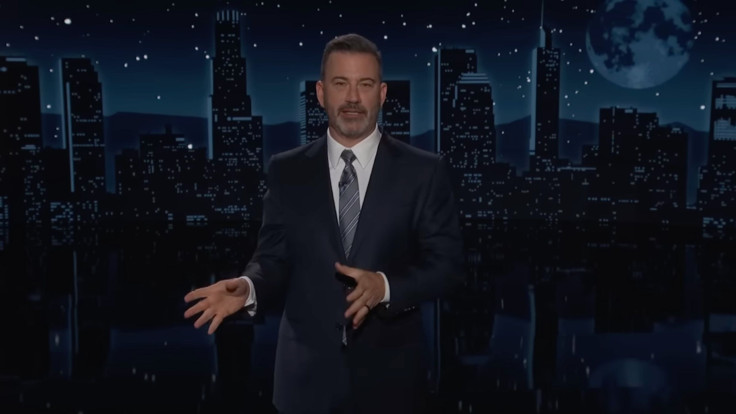Jimmy Kimmel Accused of Begging Trump to Appear Amid Viewership Slump, Fans Asks 'Desperate for Ratings?'
Kimmel's offer to host the President deepens the debate over late-night ratings and political theatre

Jimmy Kimmel publicly invited Donald Trump onto his late-night show, and the offer has fuelled a fresh debate over whether the host is courting controversy to arrest wavering viewers.
Jimmy Kimmel's remark came during a Bloomberg 'Screentime' conversation on Thursday, 09 October 2025, when the late-night presenter said he would 'love' to have US President Donald Trump on Jimmy Kimmel Live! and promised, 'Alright, I'll ask him.'
The exchange arrived after a bruising few weeks for Kimmel, a brief suspension in September over comments about the killing of conservative activist Charlie Kirk, public pressure from political figures and a Truth Social broadside from Trump that celebrated the pull-down and attacked Kimmel's ratings.
What followed has been a classic late-night paradox; an enormous, headline-grabbing spike for Kimmel's comeback episode and a rapid reversion to the series' longer-term viewing patterns, prompting critics and viewers to ask whether the invitation to Trump is a serious editorial overture or simply a ratings ploy.
Kimmel's Remarks: What He Said and Where
At Bloomberg's Screentime event, Kimmel spoke with moderator Lucas Shaw about the role of late-night in a hyper-political media era and the fallout from his September monologue.
He told the audience he had been 'maliciously mischaracterised' by critics and described candid conversations with Disney executives while the show was off the air.
On the prospect of interviewing Trump, Kimmel was strikingly direct: 'I'd love to have Trump on the show for sure. Alright, I'll ask him.' The line was delivered not as a throwaway joke but as a plainly stated intention during a filmed, on-the-record interview.

The Numbers: Spike, Slide and Context
Kimmel's return on 23 September 2025 generated extraordinary attention; Nielsen-based reporting placed the comeback at roughly 6.2–6.5 million live and same-day viewers, a rare bump for a regularly scheduled late-night episode and one of the biggest single-night audiences in years for the show.
Yet the surge proved ephemeral. Within two weeks, nightly linear audiences settled back near the programme's 2025 averages, various overnight tallies put subsequent nights at roughly 1.7–1.9 million viewers, a steep fall from the comeback peak and in line with the show's recent season norms.
Analysts caution this is not an unusual pattern, viral events drive one-off audiences on broadcast TV while digital platforms sustain long-tail consumption.
Crucially, the show's digital footprint remains large, Kimmel's comeback monologue amassed tens of millions of online views across YouTube and social platforms, demonstrating that late-night reach now runs across linear and streaming outlets. That multi-platform reality complicates simple 'ratings up / ratings down' narratives.
Politics, Public Reaction and the Stakes
US President Trump publicly celebrated the initial suspension and subsequently attacked ABC on Truth Social, a primary source of public comment during the row; his posts chastised the network and accused Kimmel of poor ratings and partisanship.
Critics on the right framed Kimmel's Bloomberg remarks as evidence of opportunism — social commentators and tabloid columnists suggested the invitation could be a bid to recapture viewers the host has lost since he made politics a larger part of his act. Outlets ran with the notion that Kimmel was 'open' to any stunt that restored audience share.
For his part, Kimmel and his defenders point to what they see as larger issues, the role of satire in holding power to account, affiliate decisions taken by station owners during the suspension, and the new economics of late-night where viral moments and YouTube metrics alter how success is measured.
Kimmel has also acknowledged that the incident forced internal conversations with Disney executives about boundaries and audience expectations, emphasising how editorial decisions now sit next to corporate and regulatory pressures.
© Copyright IBTimes 2025. All rights reserved.




















